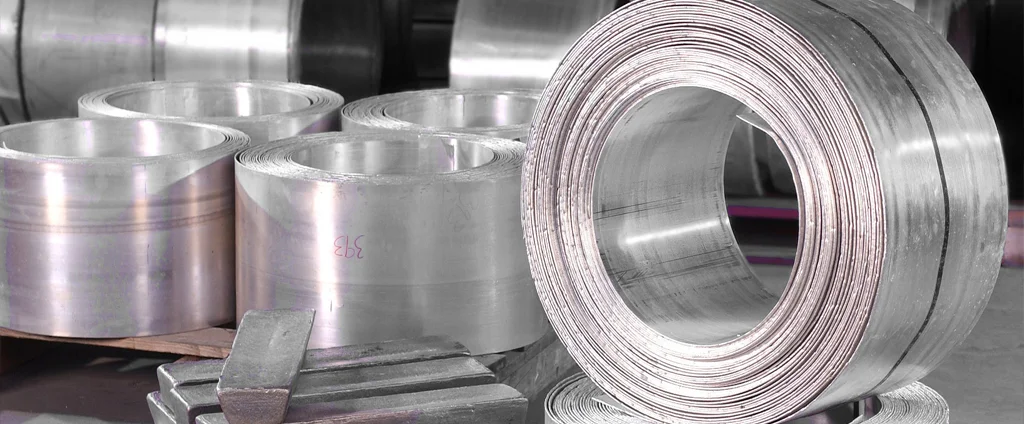Magnesium AZ31B-H24 (UNS M11311)

AZ31B-H24 is a magnesium alloy characterized by partial annealing and strain hardening, delivering an optimal balance of strength, lightweight properties, and stiffness. Widely adopted in aerospace, it supports aircraft fuselage construction while also serving diverse industrial applications requiring durable, lightweight materials.
| Chemical Composition | ||
|---|---|---|
| Element | Min | Max |
| Magnesium | —— | Remainder |
| Aluminum | 2.5% | 3.5% |
| Calcium | —— | 0.04% |
| Copper | —— | 0.05% |
| Iron | —— | 0.005% |
| Manganese | 0.2% | —— |
| Nickel | —— | 0.005% |
| Silicon | —— | 0.1% |
| Zinc | 0.6% | 1.4% |
The following table provides a list of magnesium AZ31B-H24 properties in both SI and US customary/Imperial units.
Click on the button to switch between Metric and Imperial units.
| Physical Properties | Metric |
|---|---|
| Density | 1770 kg/m3 |
| Mechanical Properties | Metric |
| Tensile Strength (Ultimate) | 290 MPa |
| Tensile Strength (Yield) | 220 MPa |
| Compressive Strength (Yield) | 180 MPa |
| Bearing Strength (Ultimate) | 495 MPa |
| Bearing Strength (Yield) | 325 MPa |
| Shear Strength | 160 MPa |
| Young’s Modulus (E) | 45 GPa |
| Shear Modulus (G) | 17 GPa |
| Elongation at Break in 50 mm | 15% |
| Poisson’s Ratio (ν) | 0.35 |
| Brinell Hardness 500 kg load, 10 mm ball | 73 |
| Knoop Hardness Converted from Brinell | 96 |
| Machinability | 100% |
| Thermal Properties | Metric |
| Melting Point | 605 - 630 °C |
| Solidus | 605 °C |
| Liquidus | 630 °C |
| Thermal Conductivity | 96 W/m·K |
| Specific Heat Capacity (Cp) | 1000 J/kg·K |
| Coefficient of Thermal Expansion (αL) | 26.0 1/°C |
| Heat of Fusion | 340 J/g |
| Electrical Properties | Metric |
| Electrical Resistivity | 9.20×10-6 Ω·cm |
The values in this table are approximate and can vary depending on various factors such as the specific manufacturing process and heat treatment applied to the alloy.
Advantages & Disadvantages of Magnesium AZ31B-H24
| Advantages | Disadvantages |
|---|---|
| Lightweight: low density | Corrosion susceptibility |
| Excellent strength-to-weight ratio | Limited formability |
| Good mechanical properties | Higher cost |
| High damping capacity | Limited welding options |
| Recyclable | Limited availability |
Applications of Magnesium AZ31B-H24
Magnesium AZ31B-H24 is utilized across various industries for its lightweight, high-strength properties, supporting applications including:
- Automotive Components: Used to reduce weight and enhance fuel efficiency.
- Aerospace Industry: Employed in aircraft and spacecraft, including seat frames, brackets, interior parts, and structural elements.
- Electronics and Consumer Goods: Found in laptops, tablets, smartphones, cameras, sporting goods, power tools, and portable devices.
- Medical Equipment: Applied in lightweight, ergonomic components such as surgical instruments, braces, orthopedic supports, and imaging devices.
- Industrial and General Manufacturing: Used for machine parts, frames, housings, tooling, and various components requiring strength and lightness.
- Defense and Military: Integrated into weapon systems, armor plating, tactical gear, and aircraft parts.
- Renewable Energy: Incorporated in wind turbines, solar panels, and other systems to maximize efficiency and reduce installation costs.
